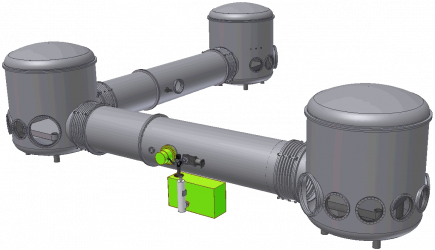LVK Poster Prize awarded to Matteo Carlassara
Congratulations to our PhD student Matteo Carlassara on winning the best poster at the 2023 September LIGO-Virgo-KAGRA (LVK) meeting held in Toyama, Japan!
His poster “Balanced Homodyne Detection at the AEI 10 m prototype: status update” was selected as the best on an experiment/instrumentation topic among a total of more than 100 posters. It outline the current progress towards implementing a balanced homodyne readout for the Sub-SQL Interferometer at the AEI 10m Prototype, including some of the challenges that Matteo is currently tackling.
DetailsFibre welding machine delivered!
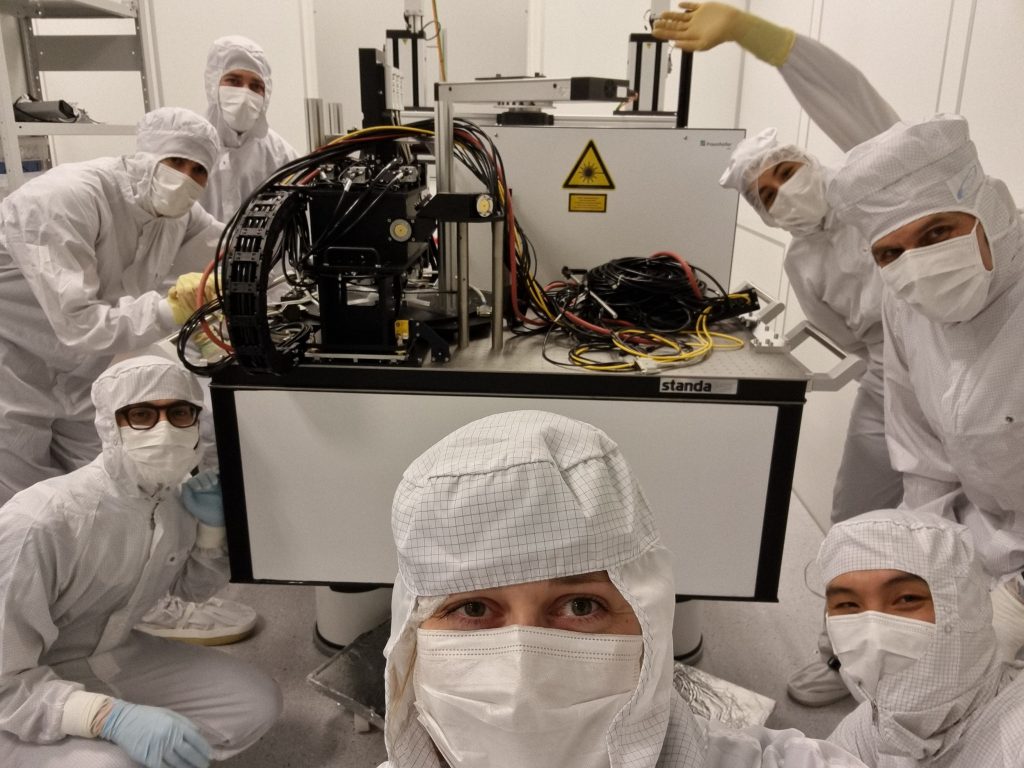
The Sub-SQL Interferometer is a step closer to realisation with the delivery of our fibre welding machine, the output of a collaborative project with the Fraunhofer Institute for Applied Optics and Precision Engineering IOF in Jena and funded by Center of Excellence Quantum Frontiers.
To ensure that the Sub-SQL Interferometer is not limited in sensitivity by suspension thermal noise, it was envisioned that quasi-monolithic suspensions similar to those used in gravitational wave detectors would be used. For the small 100 g optics in the Sub-SQL Interferometer, suspension fibres (“wires”) with diameters of 20 µm are required, thinner than the average human hair! Initial tests by our colleagues at the university of Glasgow found that indeed the technique for larger aLIGO mirrors, using a CO2 laser to weld the fused silica fibre with the fused silica test mass and penultimate mass, could be scaled down but with extremely tight tolerances required to ensure that the suspension can hang without excessive tilt.
The project with the Fraunhofer IOF was established with the goal of developing a highly accurate, repeatable and automated welding machine to produce our quasi-monolithic suspensions with the ability to easily re-weld existing suspensions for position corrections when required. Juliane von Wrangel led the efforts from the AEI 10m Prototype side to finalise the requirements and designs. The final device uses a CO2 laser with several cameras and precision actuators to control the welding process with custom software and user interface.
The 20 µm fused silica fibres will be provided by our colleagues from the Institute for Gravitational Research at the University of Glasgow.
The machine was recently delivered and installed into our clean room. Fine tuning and further testing will follow and we excitedly await the production of quasi-monolithic suspensions!
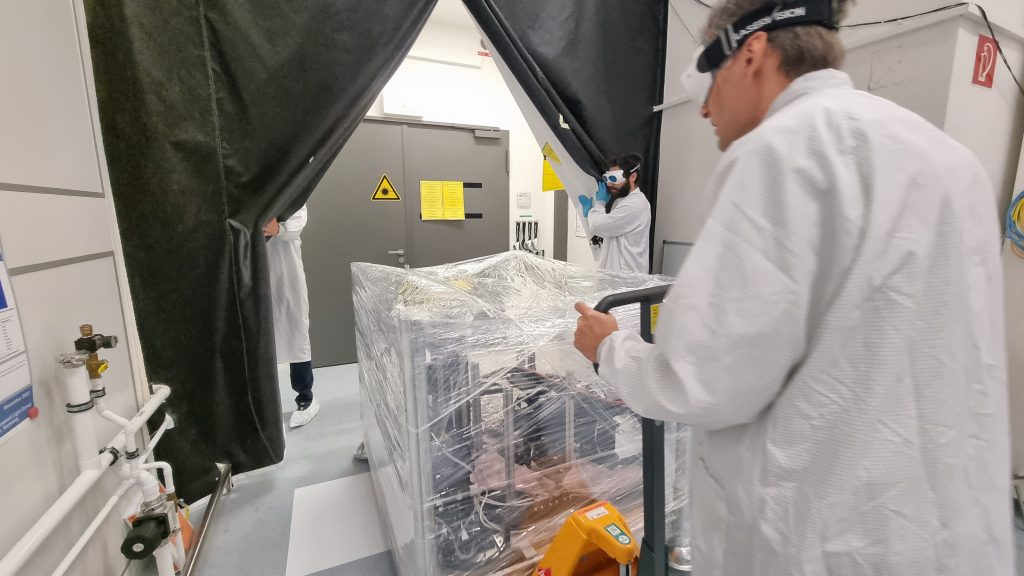
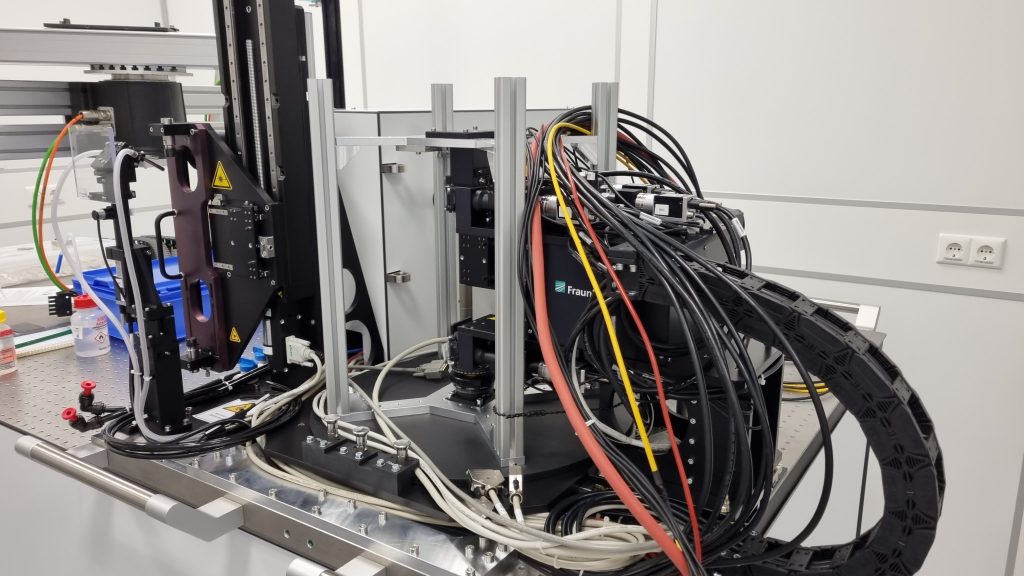
Janis Wöhler defends PhD
Congratulations to Janis Wöhler for completing his PhD! Janis’ thesis was titled “Direct measurement of coating thermal noise at the AEI 10m Prototype” which was centred around work on the thermal noise interferometer (TNI).
Janis was able to bring the noise of the TNI to a level of 1 · 10⁻¹⁸ m/√Hz and successfully measured the coating thermal noise of a high reflectivity silica-tantala (Ta2O5/SiO2) sample mirror. This was the first demonstration of a direct thermal noise measurement in the audio-band in Europe.
Janis will soon be taking up a postdoctoral position at the University of Maastricht.
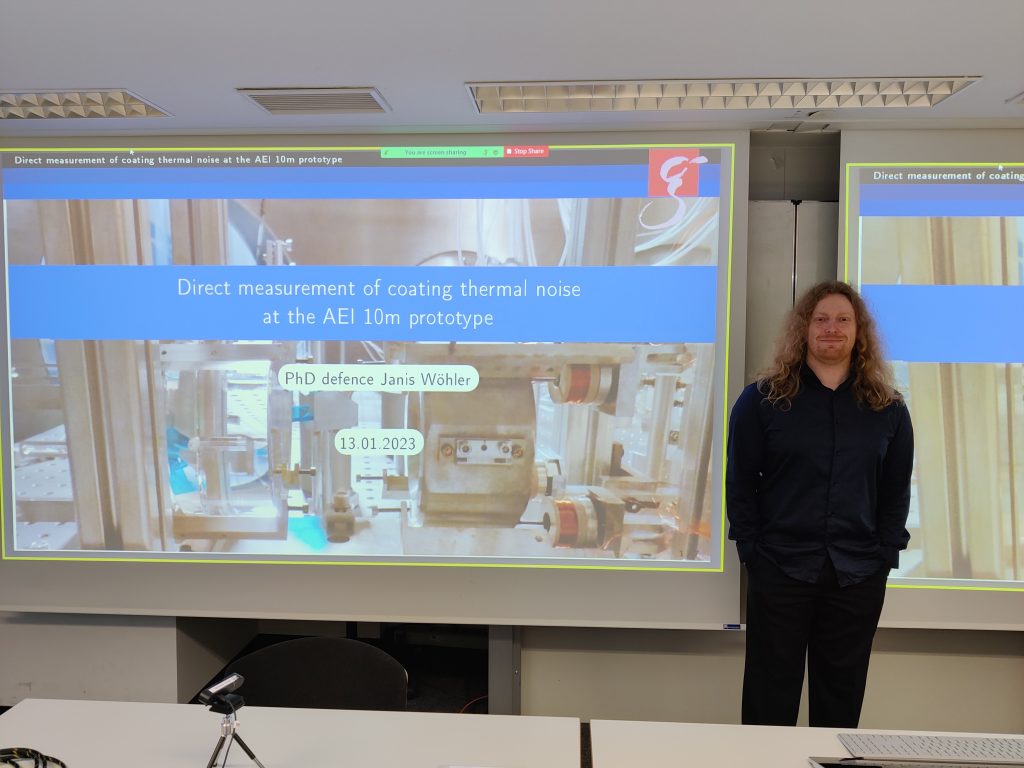
Sub-SQL beam splitter installed
The core beam splitter for the Sub-SQL Interferometer has been installed into the vacuum system and is now freely hanging in its triple suspension system.
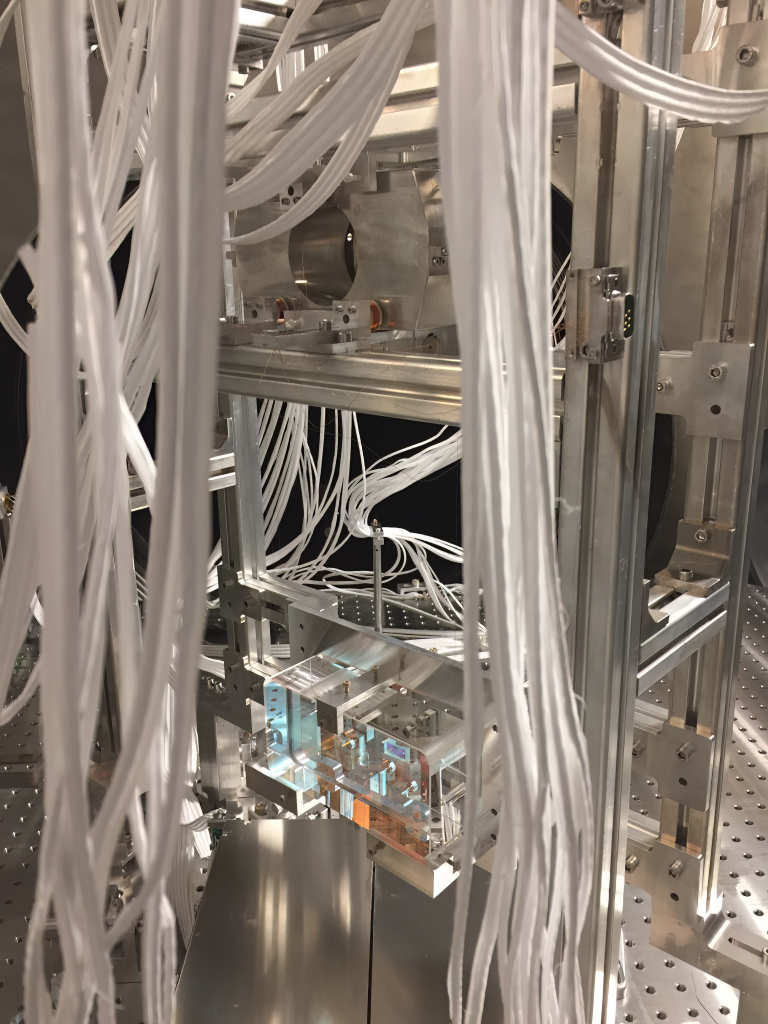
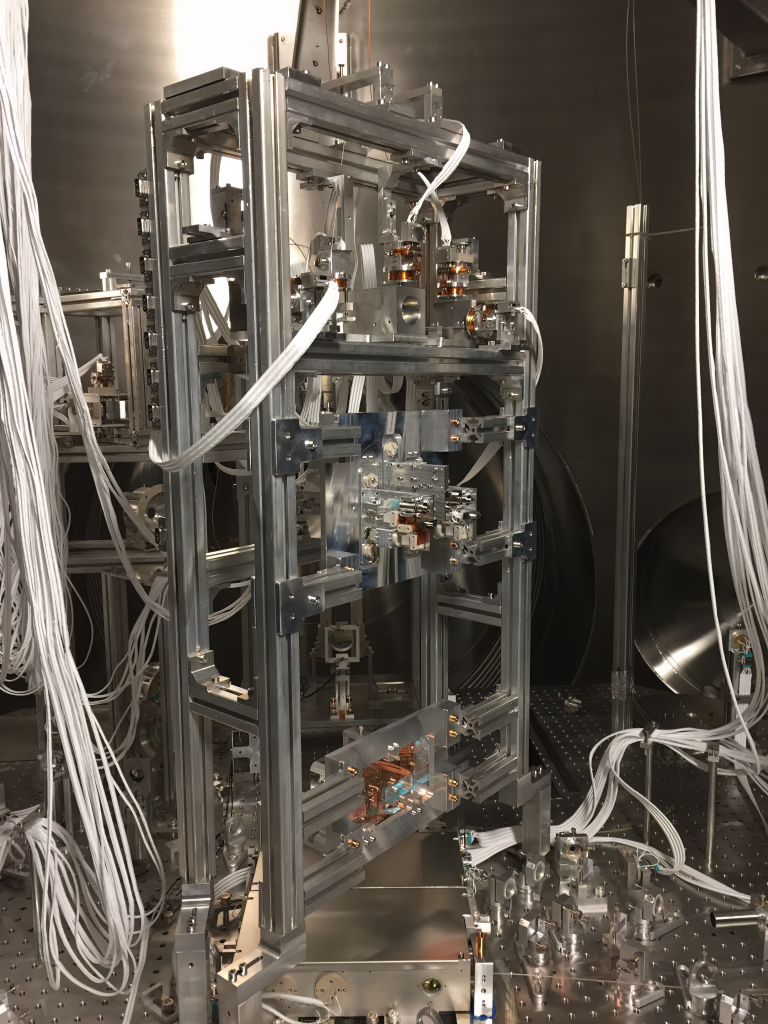

Unlike typical beam splitters used in gravitational wave detectors, the shape of our beam splitter is rectangular rather than round. This is because the beam splitter should be wide enough for secondary internal reflections (ghost beams) to exit the beam splitter through the optical surfaces rather than the barrel of the optic so that those beams can be effectively dumped. A round beam splitter fulfilling this requirement would hit the optical breadboard of the suspension platform interferometer (SPI) located directly underneath. This breadboard is housed in the aluminium box below the beam splitter in the above photos. Additionally, the rectangular shape reduces the mass of the beam splitter by approximately 50% compared to round version. This is critical for reducing the total mass on the optical table, which is limited due to the seismic attenuation system.
The beam splitter side of the optic does not use a uniform coating. Instead it uses a split coating design where only the central part of the surface has a beam splitter coating. The sides are anti-reflection coated to suppress further ghost beams.
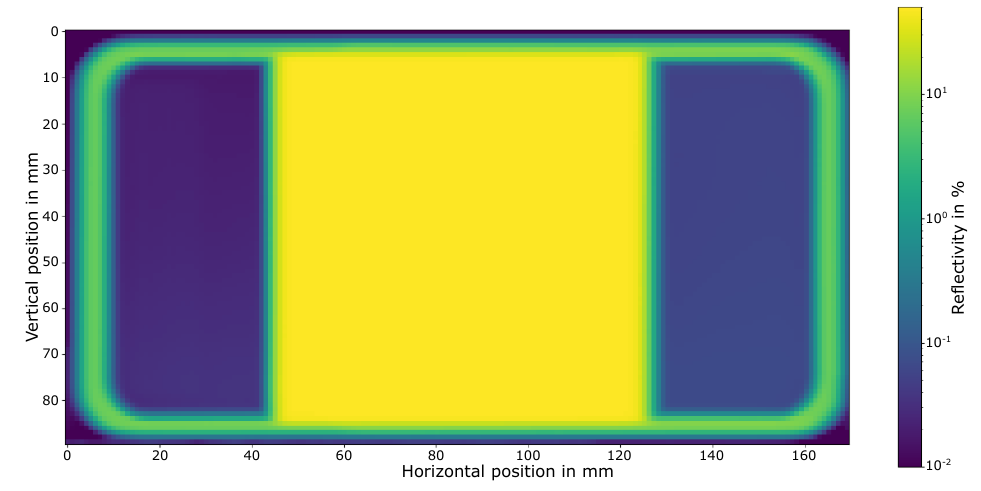
More details about the design of the beam splitter and its suspension system are available in chapter 4 of Philip Koch’s PhD thesis.
DetailsPhilip Koch defends PhD
Congratulations to Philip Koch for successfully defending his PhD thesis titled “Design, Suspension and Optical Characterization of the Beam Splitter and Output Mode Cleaner for the AEI 10 m Prototype”. Philip’s thesis work covered a range of topics including:
- the thickness homogeneity of crystalline AlGaAs/GaAs high reflectivity coatings
- the design, construction and characterisation of the main sub-SQL Interferometer beam splitter and it’s triple suspension
- building the “scatterometer” – an apparatus to characterise the scattered light produced by optics by measuring the bidirectional reflectivity distribution function (BRDF)
- the design and construction of an outpupt mode cleaner cavity for the sub-SQL interferometer, with a measured intra-cavity loss of < 0.5%
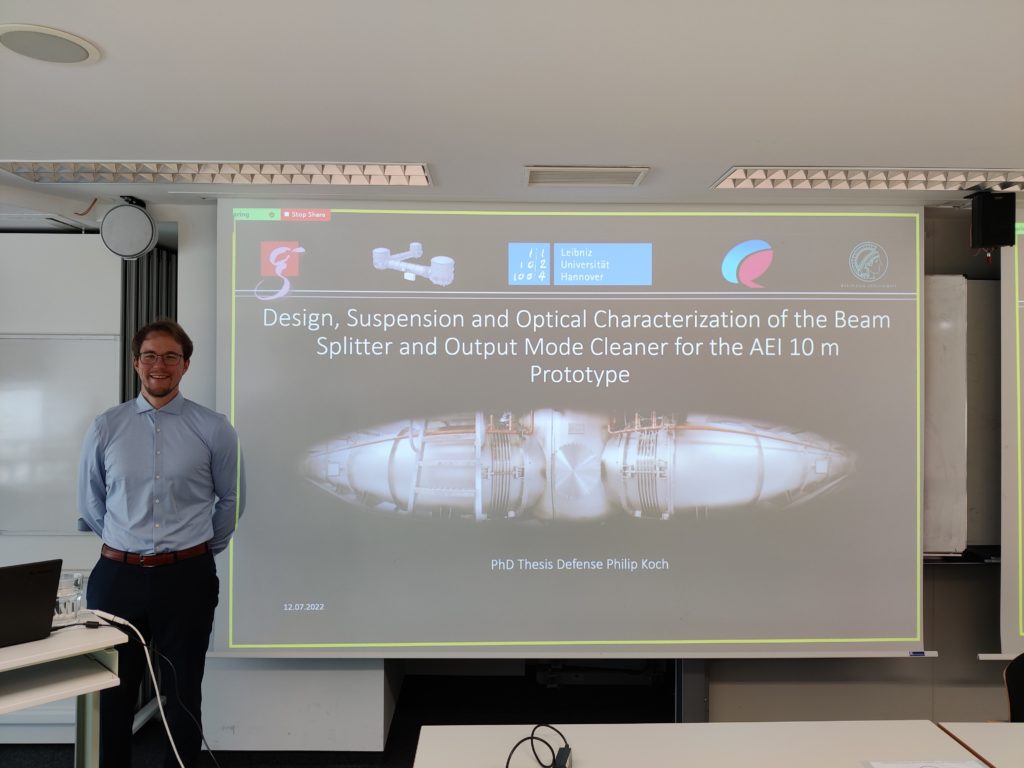
PhD positions in the AEI 10m Prototype
We have openings for talented and highly motivated students to join the AEI 10m Prototype as PhD students to work on bringing the sub-SQL interferometer online and to its design sensitivity. Topics will include the design and installation of suspended optics, interferometer control, scattered light mitigation, and noise identification and suppression.
The closing date for applications is 19.04.2022. More details and application instructions can be found on the AEI home page:
https://www.aei.mpg.de/901369/phd-positions-in-the-aei-10m-prototype
Luise Kranzhoff completes Masters degree
Congratulations to Luise Kranzhoff for successfully completing her masters studies! Her Masters thesis was titled “A Novel Vertical Inertial Sensor with Homodyne Quadrature Interferometer Readout” where she designed and characterised a new sensor and investigated their potential use as part of the AEI-SAS. Her thesis work was done in collaboration with the University of Birmingham and Vrije Universiteit Amsterdam.
Luise will soon start her PhD studies at the University of Maastricht in the Netherlands.
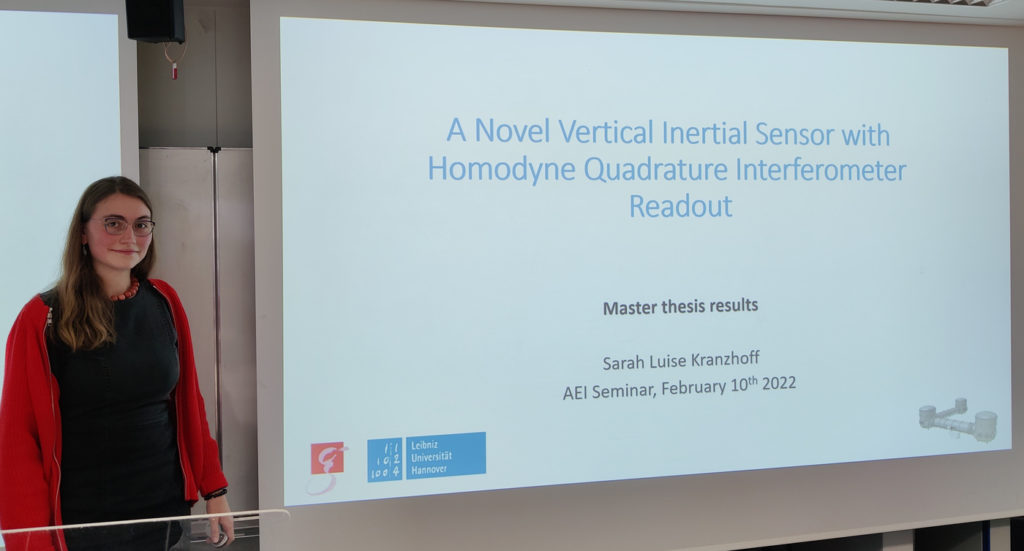
Robin Kirchhoff defends his PhD
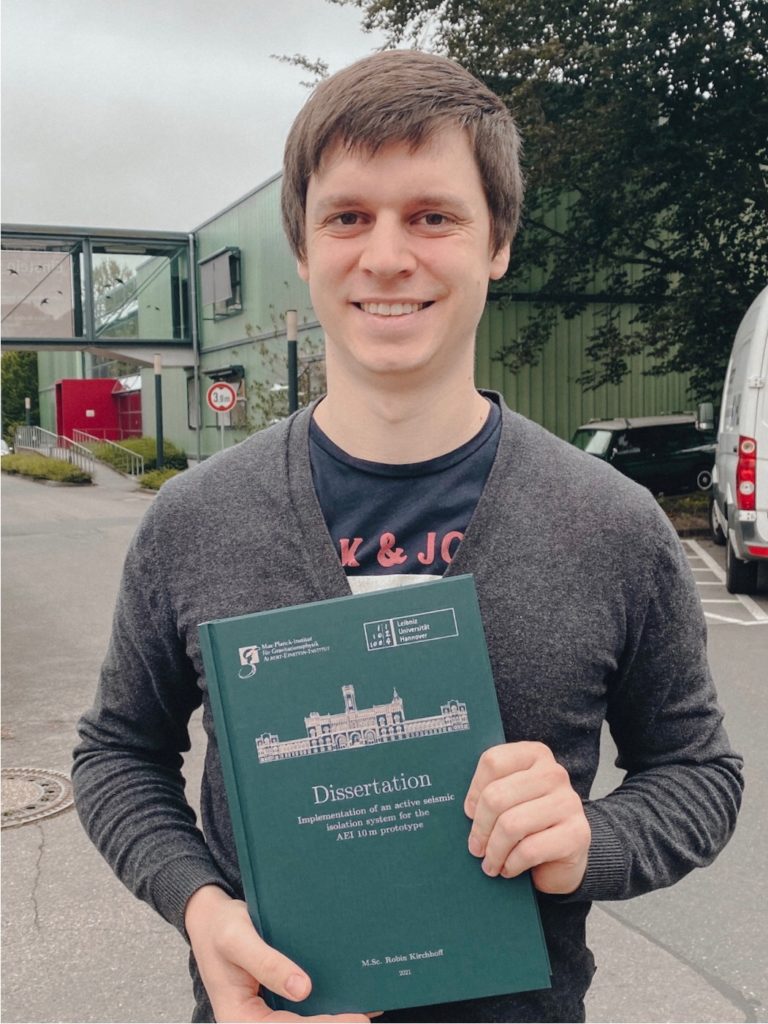
Robin Kirchhoff will receive his PhD after successfully defending his PhD thesis titled “Implementation of an active seismic isolation system for the AEI 10 m Prototype”. Robin’s work was centred around the implementation of active control schemes to seismically isolate the pre-isolation platforms in the 10 m Prototype and how they can be optimised to suppress noise in the Sub-SQL Interferometer.
Congratulations Robin!
Position as Junior Research Group Leader (m/f/d) for Sub-Standard Quantum Limit of Interferometry
As part of the Cluster of Excellence QuantumFrontiers, the QUEST Leibniz Research School in cooperation with the Faculty for Mathematics and Physics invites applications for the position of a Junior Research Group Leader (m/f/d) for Sub-Standard Quantum Limit of Interferometry (Salary Scale 14 TV-L, 100 %) to be filled as of November 1st, 2021. The position is limited to four years.
Information on the position and the application process is available on the AEI homepage.
DetailsDamping electro-optic modulator acoustic resonances with epoxy
At the prototype we use a lithum niobate New Focus (now Newport) 4004 broadband electro-optic modulator (EOM) as part of our reference cavity frequency stabilisation servo. During measurements we noticed that the EOM contained high-Q resonances at around 790 kHz and 2 MHz which looked mechanical in origin:
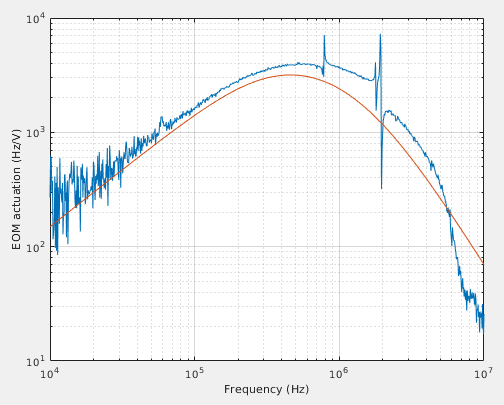
These resonances appear on the light as unwanted frequency modulation. The presence of the 790 kHz resonance creates instability in our servo, preventing us from pushing its unity gain frequency higher. A higher unity gain frequency would allow for greater suppression of laser frequency noise in the 100 Hz to 1 kHz band of the reference cavity, which in turn would reduce coupling of frequency noise to the main SQL interferometer where it would otherwise show up as a significant noise source masking the quantum noise that we wish to measure.
In passing, Sean mentioned this to our colleague Rana Adhikari in Caltech, who recalled some old “crystal lore” that mounting the lithium niobate on acoustically impedance matched material can reduce acoustic resonances. This gave Sean and Harald the idea to test this hypothesis by applying damping material to the crystal in a spare New Focus 4004.
(more…) Details